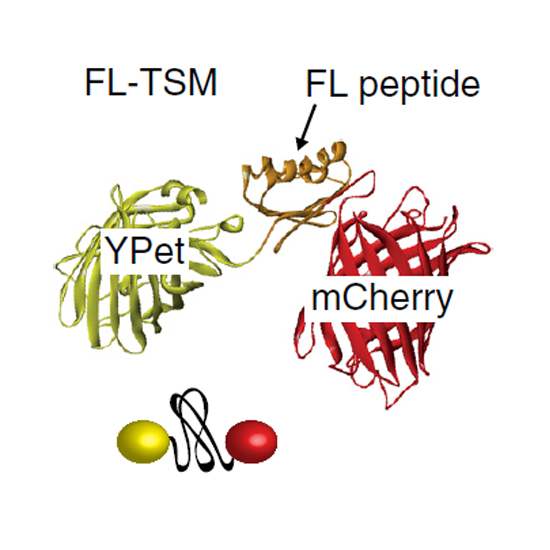Multiplexing molecular tension sensors reveals piconewton force gradient across talin-1
18-Sep-2017
Nature Methods, volume 14, pages 1090–1096 (2017), doi:10.1038/nmeth.4431
Nature Methods, online article
Förster resonance energy transfer (FRET)-based tension sensor modules (TSMs) are available for investigating how distinct proteins bear mechanical forces in cells. Yet, forces in the single piconewton (pN) regime remain difficult to resolve, and tools for multiplexed tension sensing are lacking. Here, we report the generation and calibration of a genetically encoded, FRET-based biosensor called FL-TSM, which is characterized by a near-digital force response and increased sensitivity at 3–5 pN. In addition, we present a method allowing the simultaneous evaluation of coexpressed tension sensor constructs using two-color fluorescence lifetime microscopy. Finally, we introduce a procedure to calculate the fraction of mechanically engaged molecules within cells. Application of these techniques to new talin biosensors reveals an intramolecular tension gradient across talin-1 that is established upon integrin-mediated cell adhesion. The tension gradient is actomyosin- and vinculin-dependent and sensitive to the rigidity of the extracellular environment.











